Bob Dylan once wrote, “You don’t need a weatherman to know which way the wind blows.”
But for us car folks, there are plenty of times when you do need an accurate way to quickly measure temperature.
That’s when one of those digital infrared temperature guns can really be handy.
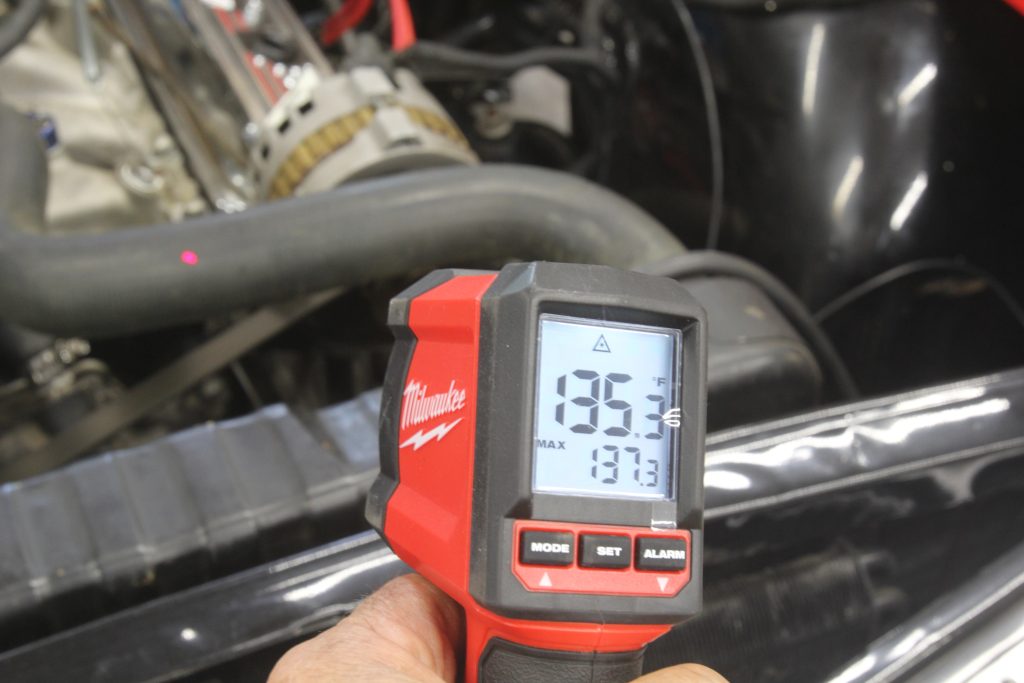
What is a Digital Infrared Temperature Gun?
These useful, handheld temp guns are technically called non-contact temperature readers. These units use a laser pointer that is used to aim the gun toward the specific area to be measured. The tool’s actual measurement device is a lens that directs the infrared energy of the object onto a series of thermocouples that convert this energy into a voltage that is then calculated as a temperature. The result is a near-instantaneous surface temperature reading of the object.
This temperature gun has literally dozens of uses for automotive diagnostic work and even more beyond the automotive world. We’ve learned to use these devices to analyze how an engine or an automotive system operates without having to bother with the tedious work of mounting an internal sensor.
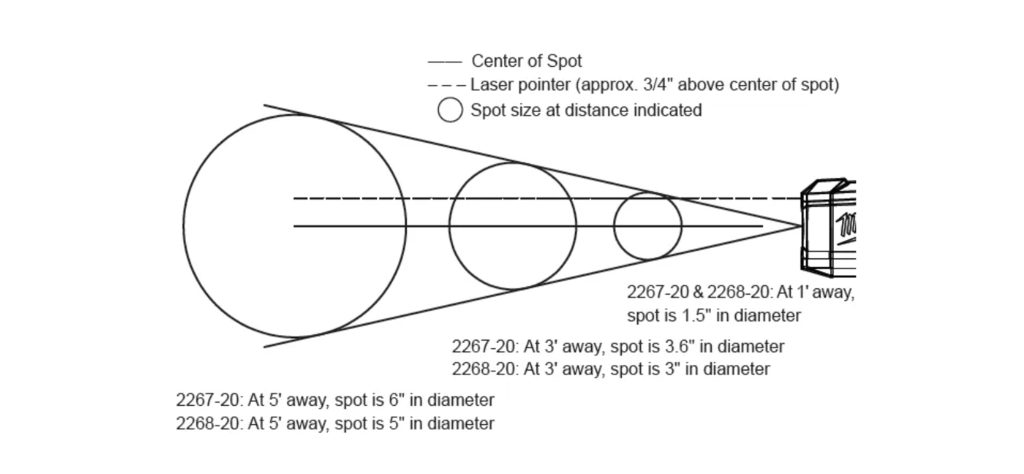
As a quick example, we purchased a four cylinder Iron Duke powered S-10 pickup a few years ago that would eventually be fitted with a 355ci small block Chevy and a T-5 five-speed. The original four cylinder engine proved itself as a reliable but underpowered parts chaser. Its only problem was that it often overheated.
After a few early repair attempts with a new thermostat and clutch fan, we solved the problem by using our temp gun to measure the radiator temperature in four separate quadrants. The lower third of the radiator was nearly 80 degrees cooler than the top two-thirds, which indicated that the radiator was clogged with sediment and needed to be replaced.
The gun made the diagnosis and solution very simple.
How to Use a Digital Infrared Temperature Gun
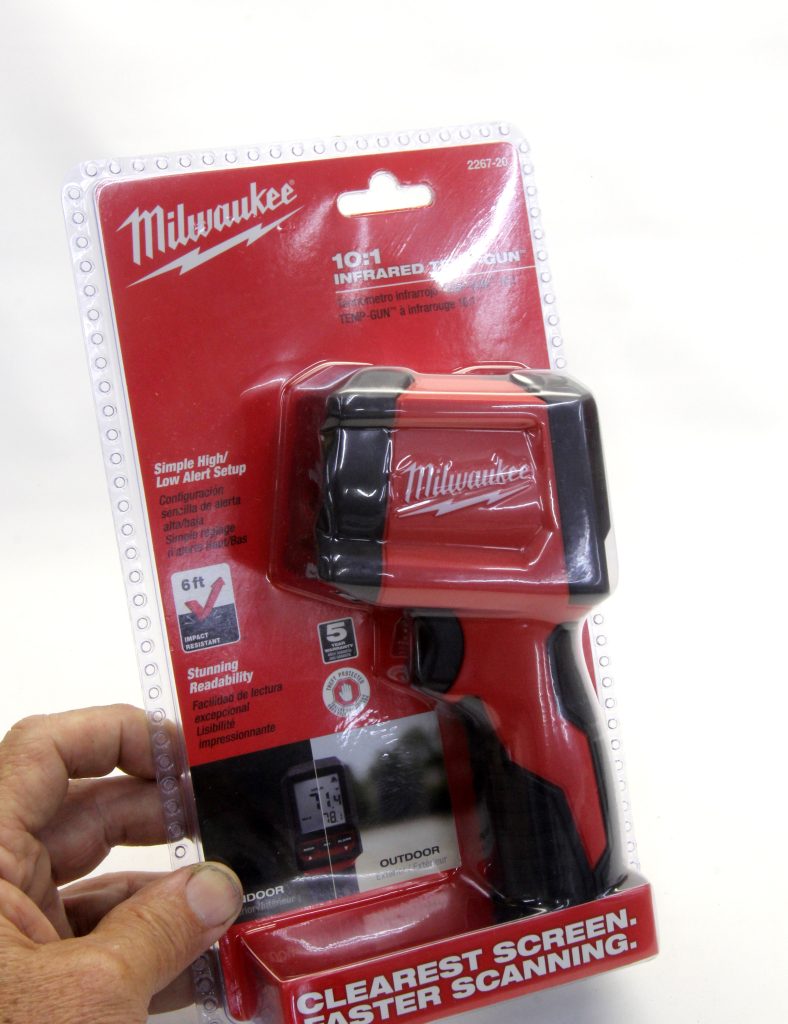
For this story, we’re using a Milwaukee infrared gun from Summit Racing (PN MWT-2267-20) that performs this exact same task. The gun is extremely easy to use and is powered by an ordinary nine volt battery that is included with the gun. Operation could not be simpler. Pull the trigger and aim the red laser beam at the object to be measured and the temperature will be displayed on the screen almost instantly.
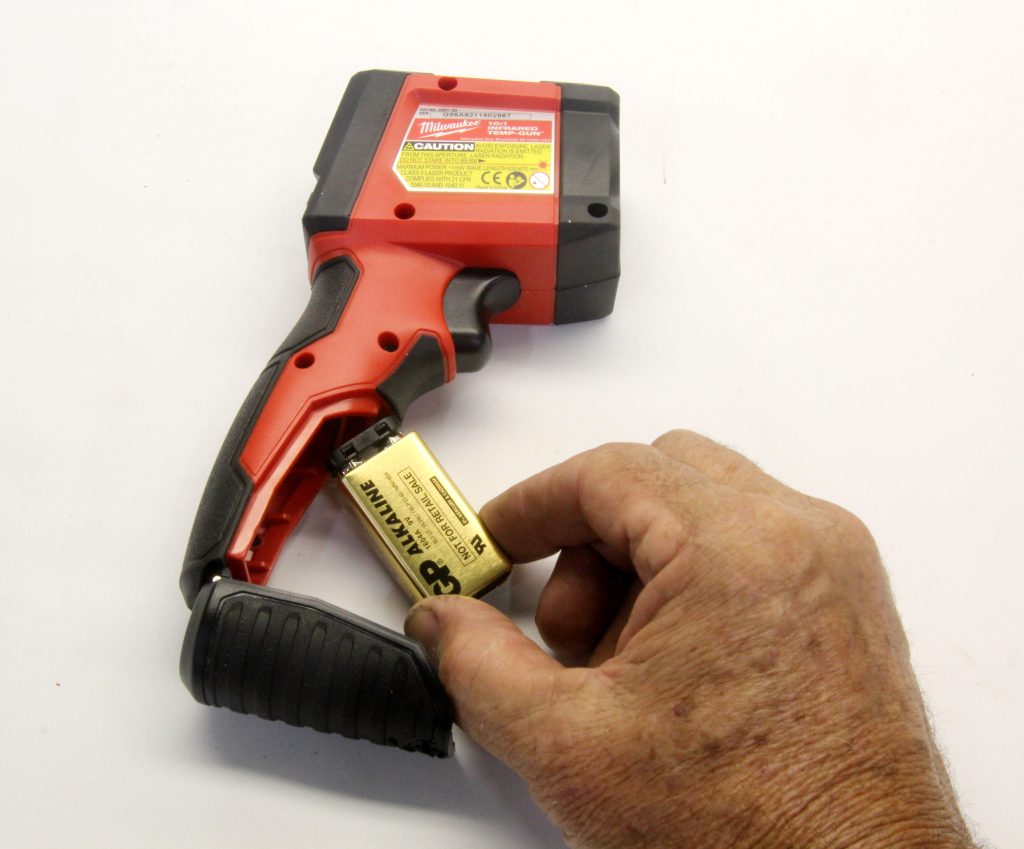
You have your choice of Fahrenheit or Celsius readings and you have the option of holding the reading on the display. Other options include a minimum and maximum temperature range report if the gun is held on an object with the trigger pulled for an extended period of time. Milwaukee claims an accuracy of +/- 2 percent which is equal to +/- 2 degrees at 100 degrees F. This gun’s maximum temperature reading is 750 degrees F but there are other guns that can record higher temperatures of over 1,000 degrees F.
You also don’t have to worry about forgetting to turn the display off because it will automatically shut off after 10 seconds.
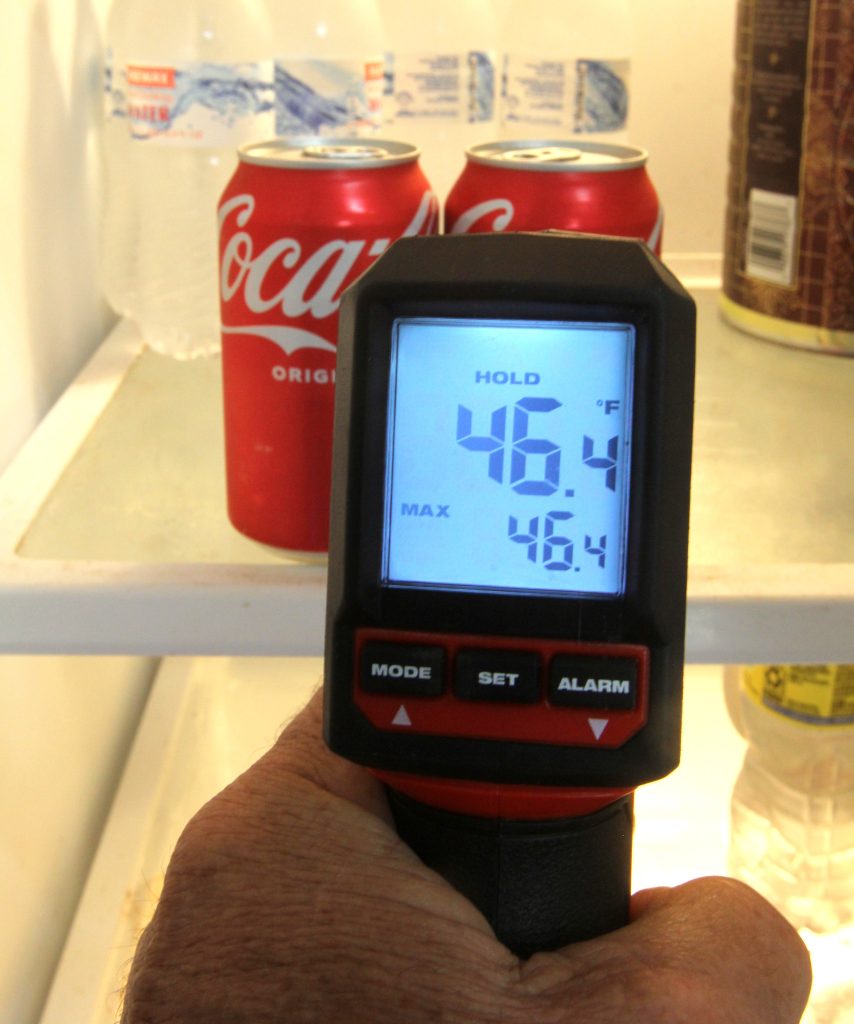
Things to Consider When Using an Infrared Thermometer
One trick we learned from a friend who is in the business of tool calibration is that infrared temp guns can become inaccurate when used on highly reflective surfaces. We’ve seen guns that are confused with highly polished surfaces like the top of an aluminum radiator and others that just seem to shrug off this issue.
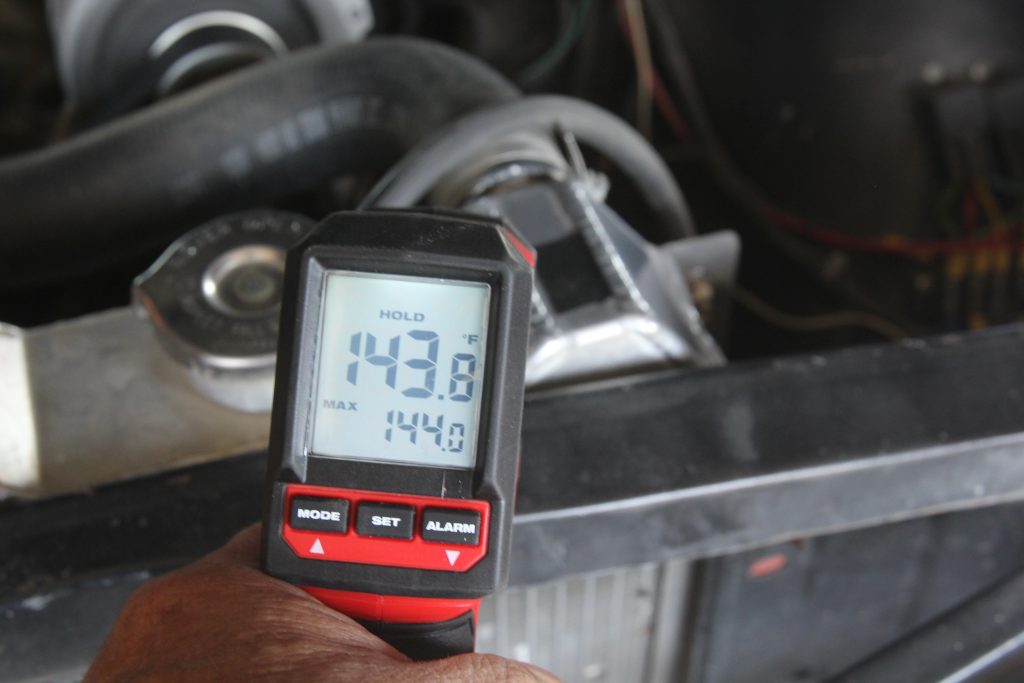
An explanation of this gets into the differences between something called surface emissivity versus radiated heat. We won’t bother with diving down that rabbit hole because there’s an easy work-around for this issue. The technique is to attach a short length of either black electrical tape or just normal masking tape to the surface.
Allow a moment or two for the tape to equalize temperature with the underlying component—like a polished radiator top—and the resulting temperature will be more accurate. According to the research we’ve looked at, the tape will generally be within +/- 2 percent. For most diagnostic purposes, this should be sufficiently accurate.
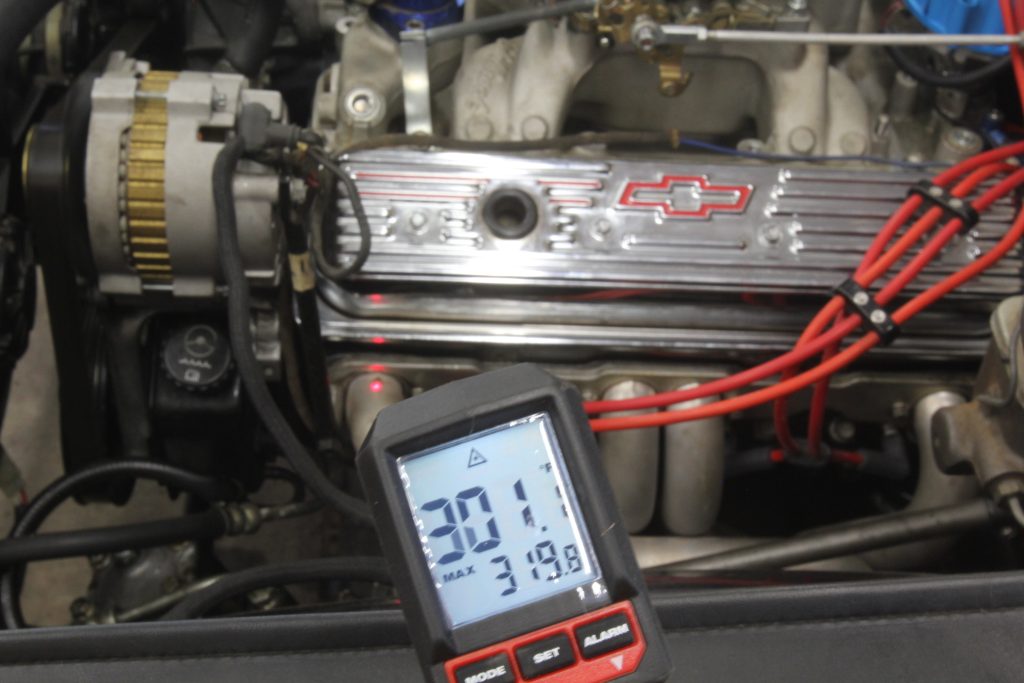
These infrared guns can be handy for a wide variety of uses. Keep scrolling and you’ll see a bunch of good ideas in the list at the bottom of this article.
But there are literally dozens more beyond automotive applications.
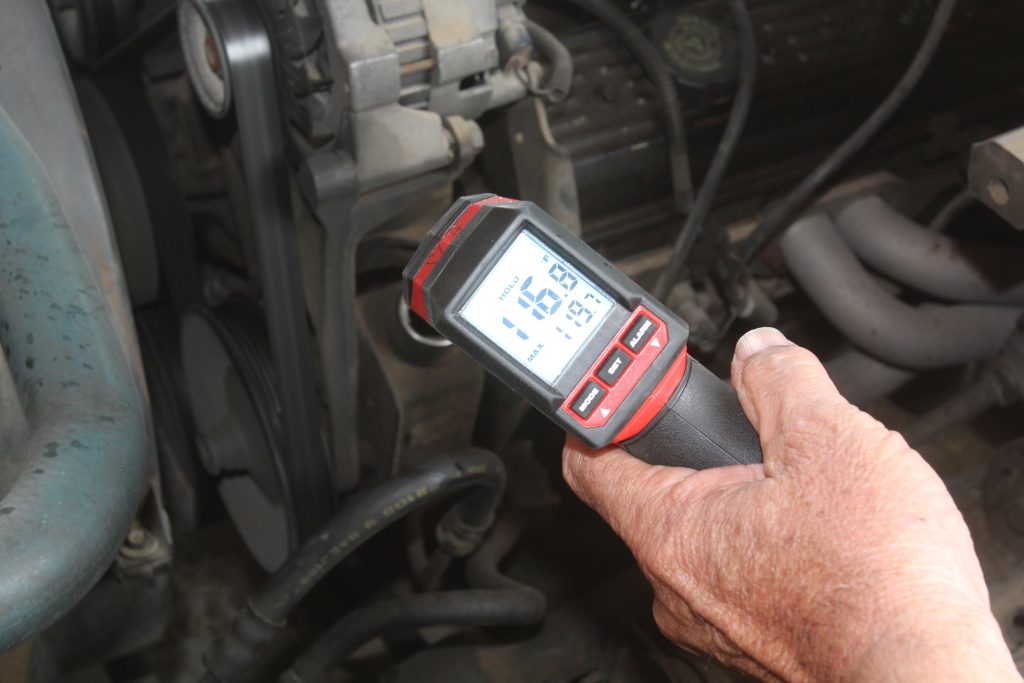
For example, you could impress your spouse by testing the actual temperature of your kitchen oven versus the temperature set on the dial. We use our gun around the shop anytime there’s an issue with temperature—with a half-second response time it’s a quick answer to the question:
“How hot is that?”

Popular Uses for a Handheld Infrared Temperature Gun Around the Garage
- Measure individual cylinder exhaust temp
- Radiator performance top to bottom on vertical flow
- Coolant temp in and out of radiator (change in temp)
- Supercharger discharge pipe temp
- Turbocharger housing temp
- Transmission sump temp
- ATF temp in and out of trans cooler
- Engine sump oil temp
- Oil temp in and out of external engine oil cooler
- Compare coolant temp to existing gauge reading
- Power steering reservoir fluid temp after laps on track
- Rear axle lube temp
- Brake fluid or caliper temp
- Heater and/or A/C discharge temp
- Catalytic converter if plugged
- Cabin floor temp test for possible insulation upgrade
- Intercooler water reservoir temp
- Alternator temp under load on hot day
- Air cleaner body temp
- Intake manifold runner temp
- Fuel in float bowl after heat soak
- Battery temp on hot days
- Starter motor or solenoid temp
- Shock absorber body temp after track use
Popular Uses for a Handheld Infrared Temperature Gun at the Track
- Drag strip: Tire temp across tire after burnout
- Autocross: Tire temp test across face for adjusting air pressure or camber angle
- Autocross or drag racing: Track surface temp
Popular Uses for a Handheld Infrared Temperature Gun in an Industrial Shop
- Check oven temp for powder coating
- Temp of micrometers or subject for measurement accuracy

Comments